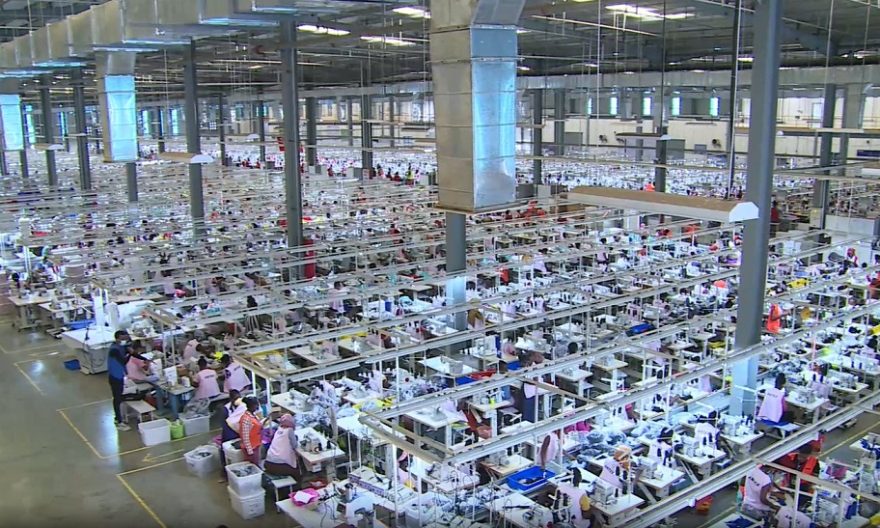
50 years ago, as learnt from economists, the Asian tiger countries such as Taiwan, South Korea, Singapore and Malaysia, which have currently been attaining economic advancement, were relaying on entirely an agrarian economy.
However, after decades of strong commitment for the expansion of manufacturing bedecked with appealing structural change, they have been in a position to immensely reduce the number of labor force engaged in farming and raise the same in industries and service sectors.
Putting high emphasis in technology and updated innovation based on the context of their nation; they were able to achieve glittering success. Educating the people with technological knowledge, the enhancement of innovation and creativity helped them for achieving development and the countries are still registering uninterrupted economic growth. Currently, these countries have established export driven economy and have become the manufacturing hub of the world.
Though Ethiopia has traveled distant in chronology, yet it appeared to be one of the emerging countries in the world and its mainstay of the economy is agriculture. The country has also been highly vulnerable to extreme weather conditions and in time of drought and heavy rainfall, crop production is critically affected in which resulted in the reduction of yield.
Nonetheless, there are initiatives and figment of bright hope due to the concerted effort of the government and relevant actors to get rid of such shortcomings. The government, since long ago, has taken various measures and among others, enhancing the utilization of inputs, providing extension service and introducing cluster farming can be mentioned in these regard and so far encouraging results have been registered. The crop yield per hectare is increased and wastage of crop in post- harvest time is also reduced.
However, to attain sustainable development along with improving agriculture sector, expanding the manufacturing sector has been taken as a way out.
Other countries’ experiences indicate that the expansion of manufacturing brings multifaceted benefit to the society and to the nation at large. It creates job opportunity to hundreds of thousands. Creating linkage vertical integration, auction market and value chain in the agriculture sector boost export trade. Substitute import and play pivotal role for the advancement of innovation and creativity.
For accommodating manufacturing, the government spent billions of Dollars and constructed industry parks. Attracted by the new development, foreign and local businessmen invest their money, share experience and knowledge and began operation. Agro-processing industries, leather and leather producing manufacturing and textile industries are hosted in the industry parks. The sector created jobs for thousands.
The number of parks has grown to 55 % from last year’s 10 %, according to Industrial Parks Development Corporation. The government of Ethiopia established 13 industrial parks specialized in various manufacturing sectors including textile, agro-processing and pharmaceutical with the vision to make the country a leading manufacturing hub by enhancing import substitution and export trade.
Industrial Parks Development Corporation CEO, Aklilu Tadesse, said the manufacturing industry is one of the sectors that have been given prior attention in the homegrown economic reform agenda of the country. The economic reform program is also linked to higher educational institutions with the industries that students can get practical trainings. As it is understood, as compared to the agriculture sector in the county’s context, the manufacturing sector utilizes relatively well trained and skilled people. Therefore, technological colleges supply trained human power to the sector. Evidences have shown that many college graduates have been employed in the sector.
Currently, the number of technical colleges both from the public and private sectors are increasing and their student enrolment rate is also growing. Students trained by professions such as electricity, welding, mechanics operation, drafting and designing are absorbed by the emerging manufacturing. In fact, there is still discrepancy between the number of the industries labor demand and the supply from academic institutions. The supply of labor is surpassed the demand but still the industries are creating job opportunities to thousands of graduates.
According to Aklilu, over the past four years, a number of measures have been taken to revive the industry citing the efforts carried out in enhancing the engagement of domestic producers in parks, substituting imported goods, and fostering new business relationships.
In addition, policies have been amended with the aim to bring about enabling situation for developers to produce for export and domestic markets with the involvement of domestic investors in industrial parks.
However, the power interruption throughout the countries has hampered the industries not to produce in their full capacity. Hence, completing the ongoing energy development projects on time and resolving the problem is vital.
The manufacturing shades located in Bole Lemi, Adama, Dire Dawa and Semera industrial parks are fully occupied by investors. Most of the industrial parks are located adjacent to boulevards and the Ethio-Djibouti rail way line which put them in advantageous position in terms of easily exporting their products and transporting imported goods utilized as inputs with low transactional costs.
According to Aklilu, efforts are being exerted to expand market destinations in America, Europe, Africa and Asia and noted that encouraging and supporting the local investors, increasing exports and expanding market access are the next priority areas.
True, the manufacturing sector is taken as viable sector for boosting the nation’s export volume through value addition. Ethiopia’s main export items have been remained to be agricultural products in their raw form. However, no one can deny the progresses in value addition since recently and thereby there is an opportunity to penetrate the oversea market.
Therefore, through linking agriculture with agro- industries, producing value added products and exporting and earning better price should be taken as a priority agenda.
As it is well understood, Ethiopia is endowed with abundant natural resources. The country is the second populous country in Africa next to Nigeria with more than 120 million people. The population can serve both as labor force and as consumer which create market opportunity to the producing industries.
The nation has also possessed excess arable lands and abundant surface and underground water, and by combining these resources, cultivating and producing crops, fruits and vegetables can be supplied to agro industries and utilized as inputs. Besides, products can be supplied both to the domestic and foreign markets which again enhance the nation’s foreign currency earning.
The nation also has various agro ecologies and vast lands conducive for sugar plantations which can create job opportunities for hundreds of thousands both in plantation farms and sugar factories. Such venture can attract both local and foreign investors and so far the government strides in such venture.
According to the Ministry of Industry, the nation is still not meeting the domestic sugar demand and to fill the gap the country spends billions of Dollars annually for the importation of sugar. Therefore, substituting imports must be prioritized through enhancing production. Sugar production can play pivotal role in supplying its product both to the local and the foreign markets.
Ethiopia has also the largest cattle population in Africa but as the cattle rearing practice is more of traditional; its contribution to the nation’s economy is less than the expected. Hence, to improve productivity of the sector, Ministry of Agriculture and Ethiopian Agricultural Research Institute have tried their level best and currently, conducting a profound research and reproduced hybrid better cattle specious which have high milk and meat yields capacity and supplied to farmers.
When the sector is modernized and well exploited, not only boosts meat and milk production but also plays pivotal role by supplying inputs to leather and leather products industries and beef factories. In the urban areas, the demand for milk and meat is growing from time to time and if the sector supplies sufficient products to the urban centers it can tap the growing markets.
As mentioned above, the government showed its resoluteness to attain economic development and reach to the middle income by the year 2030. Cognizant of the value of expanding manufacturing for attaining structural change and improve the living standard of the population, various measures have been taken which the construction of industrial parks is one of the instances.
Investors have obtained shades accommodated by banking and other facilities such as electric power supply and updated internet services and such endeavor will be continued in the future.
BY ABEBE WOLDEGIORGIS
THE ETHIOPIAN HERALD TUESDAY 26 MARCH 2024





